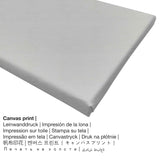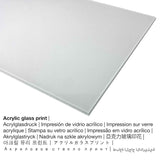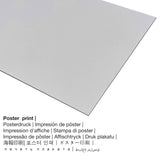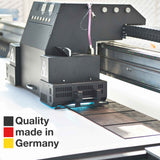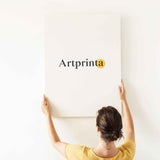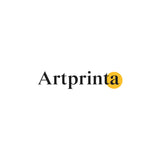Hubert Robert, 1775 - Ụmụ nwanyị na-asa akwa na ogige - ọmarịcha nka
Ụtụ gụnyere. Mbupu gbakọrọ na ndenye ọpụpụ.
Ozi izizi gbasara ọrụ nka site na webụsaịtị ihe ngosi nka (© - Petit Palais - Musée des Beaux-arts de la Ville de Paris - Petit Palais - Musée des Beaux-arts de la Ville de Paris)
The "Washerwomen in a park" is one of the masterpieces of Hubert Robert, on top of his game. Although this painting was painted in France, the memory of the Italian gardens is still alive. Hubert Robert does in fact never departed. The drawings scribbled in the parks of the villas of the Eternal City have been constantly stimulate his imagination in order to achieve the ideal creations blending reality and invention. Named "designer of the gardens of the King" on his return to France he conceives picturesque gardens combining, in the same way as in his pictorial compositions, ruins, statues, fountains and groves. The "Bathers" reflect this dual experience. On the one hand, the painter combines a monumental fountain reminiscent of the Villa Conti in Frascati, and a cascade of stairs, which seems to remember the incredible achievement of Pirro Ligorio for the gardens of the Villa d'Este. On the other hand, it is the landscape design and the experience gained through his official duties, which led him to consider the park as a place to live. It is here a "ruin" which is no longer a case for approval, but a space invested by the common people. Thus, these are not noble walkers who walk this whimsical garden but many laundresses engaged in hard work.
The table may have been submitted to the 1781 Salon, which described "a wash in the middle of a garden", painted by Hubert Robert. It was preserved in the collection of E. Arago. According to Mireur directory, a fleet of Interior (54 x 44 cm) from this collection was sold in 1879 for 2300 francs. February 14, 1879, include the table when selling Alfred Saucède (No. 62, sold 3 000frs). It was perhaps acquired by Dutuit brothers, since the table was in their collection Rouen, in the late nineteenth century. Augustus Dutuit donated to the City of Paris in 1902.
Landscape, Washerwoman - Laundress, Park, Garden, Fountain, Water basin, Staircase
Kedu ụdị ngwaahịa nka anyị na-enye?
In 1775 the painter Hubert Robert made this 18th narị afọ masterpiece. The more than 240 afọ mbụ nwere nha - Ogologo: 56 cm, obosara: 45,5 cm. Mmanụ, Canvas (ihe) was applied by the French painter as the medium of the masterpiece. This artwork can be viewed in in the collection of Petit Palais - Musée des Beaux-arts de la Ville de Paris, nke bụ ihe ngosi nka nka na mpaghara 8th. Site n'ikike nke: Petit Palais Paris (ikikere: ngalaba ọha).Additionally, the artwork has the following creditline: . Furthermore, alignment is in odida obodo format na nwere akụkụ ruru nke 5: 2, nke pụtara na ogologo bụ ugboro abụọ na ọkara ogologo karịa obosara. The curator, painter Hubert Robert was an artist, whose art style was mainly Rococo. The French painter was born in 1733 in Paris, Ile-de-France, France and deceased at the age of 75 N'afọ 1808 na Paris, Ile-de-France, France.
Họrọ ngwa ngwaahịa gị
Na menu ndọpụta ngwaahịa ị nwere ike ịhọrọ nha na akụrụngwa masịrị gị. Nha na ihe ndị a bụ nhọrọ anyị na-enye gị maka nkeonwe:
- Metal (aluminium debond mbipụta): This is a metal print made on aluminium dibond material with an impressive depth effect. The non-reflective surface structure make a modern impression. The Aluminium Dibond Print is the best start to prints with aluminum. The white & bright parts of the work of art shimmer with a silk gloss, however without the glow. Colors are luminous in the highest definition, fine details of the print appear crisp and clear, and you can really notice a matte appearance of the art print surface. The direct print on aluminium is one of the most popular entry-level products and is a truly sophisticated way to display artworks, because it puts the viewer’s attention on the image.
- Akwụkwọ mmado ebipụtara (akwa akwa akwa): A poster is a UV printed sheet of cotton canvas with a slightly rough structure on the surface, that resembles the original version of the work of art. Please note, that depending on the absolute size of the poster we add a white margin of around 2-6cm around the artwork, which facilitates the framing with your custom frame.
- Mbipụta kanvas: A canvas print, which should not be mistaken with an artwork painted on a canvas, is a digital copy printed from an industrial printing machine. It generates the sculptural effect of three dimensionality. Additionally, a canvas makes a cosy and comfy look. Your canvas print of this artwork will give you the chance to turn your custom art print into a large size artwork as you know from galleries. A canvas print has the advantage of being relatively low in weight. This means, it is easy to hang up the Canvas print without any wall-mounts. A canvas print is suited for any type of wall.
- Mpempe iko acrylic na-egbuke egbuke: An acrylic glass print, often named a plexiglass print, changes an original artwork into beautiful décor. The work of art is being manufactured with state-of-the-art UV printing machines. Our acrylic glass protects your chosen fine art print against light and external influences for many decades.
Tebụl nyocha nke onye na-ese ihe
| Aha onye nka: | Hubert Robert |
| Aha nka ndị ọzọ: | Robert des Ruines, Robart Hubert, Roberts Hubert, Robarts Hubert, Robert Hubert, Robert Hubert des Ruines, Hubert Robert |
| Gender: | nwoke |
| Obodo onye nka: | French |
| Ọrụ: | curator, onye na-ese ihe |
| Mba onye si: | France |
| nhazi ọkwa: | nna ukwu ochie |
| styles: | Rococo |
| Oge ndu: | 75 afọ |
| Amụrụ n'afọ: | 1733 |
| Obodo: | Paris, Ile-de-France, France |
| Nwụrụ n'afọ: | 1808 |
| Nwụrụ na (ebe): | Paris, Ile-de-France, France |
Nkọwa ihe nka
| Aha nka: | "Washerwomen in a park" |
| Nhazi: | sere |
| Okwu nche anwụ: | nka ochie |
| oge: | 18th narị afọ |
| Ekepụtara: | 1775 |
| Afọ nka: | ihe karịrị 240 afọ |
| Ọkara nke ihe osise izizi: | Mmanụ, Canvas (ihe) |
| Akụkụ nke ihe osise izizi: | Ogologo: 56 cm, obosara: 45,5 cm |
| Ụlọ ihe ngosi nka / mkpokọta: | Petit Palais - Musée des Beaux-arts de la Ville de Paris |
| Ebe ngosi nka: | Paris, France |
| Weebụsaịtị ihe ngosi nka: | www.petitpalais.paris.fr |
| Ụdị nka nka: | ngalaba ọha |
| Site n'aka: | Petit Palais Paris |
Banyere ihe
| Nkewa ngwaahịa: | ezi nka mmeputakwa |
| Usoro mmeghari: | dijitalụ mmeputakwa |
| Usoro mmepụta: | UV kpọmkwem obibi |
| Production: | German mmepụta |
| Stockdị ngwaahịa: | na mmepụta ihe |
| A na-atụ aro iji ngwaahịa eme ihe: | mgbidi mma, art ebipụta gallery |
| Nhazi: | usoro odida obodo |
| Oke akụkụ onyonyo: | 5: 2 - ogologo: obosara |
| Mmetụta akụkụ onyonyo: | ogologo bụ ugboro abụọ na ọkara ogologo karịa obosara |
| Ihe mmeputakwa dị: | ígwè obibi akwụkwọ (aluminium dibond), ebipụta canvas, mbipụta akwụkwọ mmado (akwụkwọ kwaaji), mbipụta iko acrylic (nwere ezigbo mkpuchi iko) |
| Nhọrọ nha nha mbipụta kanvas (akwa akwa na etiti ihe ndọtị): | 50x20cm - 20x8", 100x40cm - 39x16", 150x60cm - 59x24", 200x80cm - 79x31" |
| Mbipụta iko acrylic (nwere ezigbo mkpuchi iko) nhọrọ nha: | 50x20cm - 20x8", 100x40cm - 39x16", 150x60cm - 59x24", 200x80cm - 79x31" |
| Mpempe akwụkwọ mmado (akwụkwọ kwaaji) nha: | 100x40cm - 39x16" |
| Nha ebipụta aluminom: | 50x20cm - 20x8", 100x40cm - 39x16" |
| ụba: | biko buru n'uche na nka nka enweghi fremu |
Disclaimer: We make every effort to depict our art products as accurate as possible and to demonstrate them visually on the different product detail pages. Although, the colors of the print materials and the print result might differ slightly from the image on your screen. Depending on your screen settings and the quality of the surface, not all color pigments will be printed 100% realistically. Given that the fine art prints are processed and printed manually, there might as well be slight deviations in the motif's exact position and the size.
Nwebiisinka © - Artprinta.com


